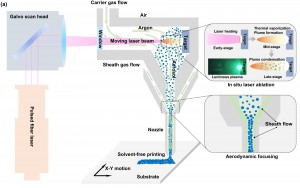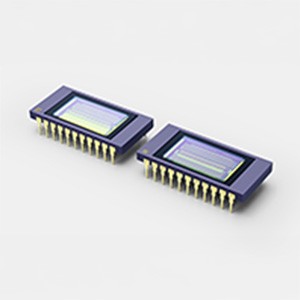
Researchers from the universities of Glasgow, Bristol and Exeter have collaborated to create an entirely new kind of optical tweezers that use fluid flow instead of light to control particles of any material and hold light-sensitive biological cells in place in a minimally invasive way.
Current optical tweezers use light. Optical forces created by tightly focused laser beams trap and manipulate particles like “microscopic hands” for scientists. The drawback: Existing techniques require very intense light, which can damage live biological specimens and also restrict the types of objects that can be held. The new technique developed by the researchers in the UK, by contrast, enables optical trapping without focussing any laser light onto the trapped particles.
“We have developed a new optical tweezers platform that traps ’target' microscopic particles using fluid flow instead of light,” says research fellow Dave Phillips from Exeter’s School of Physics. “The fluid flow itself is created by moving optically trapped particles in the vicinity of the particles we wish to indirectly control.” The scientists use a camera to watch the target particles, and when they see the particles move out of place, they automatically create flows to push them back.
Moving microscopic objects regardless of their material composition
What is unique about this new technology, compared with previous optical tweezers, is that microscopic objects can be trapped and moved completely independently of their material composition. Conventional optical tweezers, says Phillips, can only trap particles that interact with light in a certain way, which usually means that the particles have to be transparent to the optical trapping light. “However, in our system, as it is fluid flow that traps the target particles, there are no restrictions on what these particles are made of,” Phillips says.
Protecting light-sensitive cells from harm
Previous methods not only suffered the above mentioned problem of material restrictions, conventional optical tweezers directly illuminate trapped objects with high-intensity laser light. Phillips notes that this can damage delicate biological systems, such as cells. In the past, this potentially meant that there was no way of optically trapping light-sensitive cells without damaging them. “However, our new indirect trapping system avoids illuminating the target objects with high-intensity laser light and so is potentially less harmful to the trapped objects,” the researcher says. Thus, the novel technique represents a significant research advance, as the groundbreaking optical tweezers prevent damaging light sensitive cells or, indeed, bathing any cells in focussed radiation, according to the expert.
Impact on future light-based technologies
The successful realization of this entirely new kind of optical tweezers can potentially impact the design of the next generation of certain light-based technologies. “In the future, we hope systems like ours will undergo further development and ultimately enable control of the full three-dimensional motion of free-swimming cells — so-called ‘swimmers.’ This would allow us to hold a swimmer in place, rotate it to view from any direction, all using the forces of fluid flow alone,“ Phillips says. “So from the perspective of the swimmer, it would experience no difference from if it were freely swimming through fluid.”
The most compelling aspect of this research success? “For me, it is the exquisite control over microscale flow fields in very small volumes that we have demonstrated,” Phillips shares. As a next step, he and his colleagues are planning to focus on 3D indirect hydrodynamic trapping of biological systems.
The paper “Indirect optical trapping using light driven micro-rotors for reconfigurable hydrodynamic manipulation” is published in Nature Communications.
Written by Sandra Henderson, Research Editor, Novus Light Technologies Today.























 Back to Features
Back to Features































